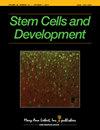源自间充质干细胞的外泌体通过 miR-99b-5p/PCSK9 轴提高受损子宫内膜细胞的活力。
IF 2.5
3区 医学
Q3 CELL & TISSUE ENGINEERING
引用次数: 0
摘要
研究从骨髓间充质干细胞中提取的外泌体是否能通过miR-99b-5p/PCSK9轴修复受损的子宫内膜基质细胞。通过超速离心法分离出骨髓间充质干细胞的外泌体(BMSC-exos),并使用透射电子显微镜和纳米流式细胞术对其进行表征。在体外建立了米非司酮诱导的 EnSC 损伤模型,并评估了 BMSC-exos 的吸收情况。EnSCs 被分为三组:正常组(ctrl)、EnSC 损伤组(模型)和 BMSC-exo 治疗组。BMSC-exos 对 EnSC 增殖、凋亡和血管内皮生长因子(VEGF)表达的影响是通过间充质干细胞-exos 与子宫内膜细胞共培养来评估的。此外,还利用高通量测序技术鉴定了差异表达基因(DEGs)。通过生物信息学分析、RT-qPCR、Western 印迹、CCK8 检测、免疫组织化学和双荧光素酶实验,研究了 BMSC-exos 衍生的 miRNA 修复 EnSC 损伤的潜在机制。BMSC-exos 表达标记蛋白 CD9 和 CD63。激光共聚焦显微镜显示,BMSC-exos能进入受损的EnSCs。在BMSC-exos-EnSC共培养组与模型组相比,BMSC-exos能显著增加受损EnSC的增殖,并以剂量依赖的方式抑制细胞凋亡。BMSC-exos-EnSC共培养组中Caspase-3、Caspase-9、Bax和VEGF mRNA的表达水平明显下调,而Bcl-2的表达上调。我们在模型组和ctrl组之间以及BMSC-exo组和模型组之间发现了28个重叠的DEGs。转染 miR-99b-5p mimics 能显著降低 PCSK9 基因的表达,抑制自噬相关蛋白 Beclin-1 和 LC3-II/I 的表达及细胞凋亡,从而促进 EnSC 增殖。转染 miR-99b-5p 抑制剂则显示出相反的效果。薄子宫内膜中Beclin-1、LC3-II/I和PCSK9的表达明显增加。BMSC-exos促进子宫内膜增殖,而miR-99b-5p通过靶向PCSK9抑制细胞凋亡并促进EnSC增殖,为治疗薄型子宫内膜提供了一个新靶点。本文章由计算机程序翻译,如有差异,请以英文原文为准。
Exosomes derived from mesenchymal stem cells increase the viability of damaged endometrial cells via the miR-99b-5p/PCSK9 axis.
To investigate whether exosomes derived from bone marrow mesenchymal stem cells repair damaged endometrial stromal cells through the miR-99b-5p/PCSK9 axis. Exosomes derived from BMSCs (BMSC-exos) were isolated by ultracentrifugation and characterized using transmission electron microscopy and nanoflow cytometry. A mifepristone-induced EnSC injury model was established in vitro, and the uptake of BMSC-exos assessed. EnSCs were divided into three groups: the normal group (ctrl), EnSC injury group (model) and BMSC-exo treatment group. The effects of BMSC-exos on EnSC proliferation, apoptosis, and vascular endothelial growth factor (VEGF) expression were assessed by coculturing MSC-exos with endometrial cells. Furthermore, high-throughput sequencing was used to identify differentially expressed genes (DEGs). Through bioinformatics analysis, RT‒qPCR, western blotting, the CCK8 assay, immunohistochemistry and dual luciferase experiments, the potential mechanism by which BMSC-exos derived miRNAs repair EnSC injury was studied. BMSC-exos expressed the marker proteins CD9 and CD63. Laser confocal microscopy showed that BMSC-exos could enter damaged EnSCs. In the BMSC-exos-EnSC coculture group compared with the model group, BMSC-exos significantly increased the proliferation of damaged EnSC and inhibited cell apoptosis in a dose-dependent manner. The expression levels of Caspase-3, Caspase-9, Bax and VEGF mRNA were significantly downregulated in the BMSC-exos-EnSC coculture group, while Bcl-2 expression was upregulated. We identified 28 overlapping DEGs between the model and ctrl groups, and between the BMSC-exo and model groups. Transfection with miR-99b-5p mimics significantly decreased PCSK9 gene expression and inhibited the expression of the autophagy related proteins Beclin-1 and LC3-II/I and apoptosis, thereby promoting EnSC proliferation. Transfection with a miR-99b-5p inhibitor showed the opposite effects. Beclin-1, LC3-II/I and PCSK9 expression in the thin endometrium was significantly increased. miR-99b-5p promoted cell proliferation by targeting PCSK9. BMSC-exos promoted endometrial proliferation, and miR-99b-5p inhibited cell apoptosis and promoted EnSC proliferation by targeting PCSK9, providing a new target for the treatment of thin endometrium.
求助全文
通过发布文献求助,成功后即可免费获取论文全文。
去求助
来源期刊

Stem cells and development
医学-细胞与组织工程
CiteScore
7.80
自引率
2.50%
发文量
69
审稿时长
3 months
期刊介绍:
Stem Cells and Development is globally recognized as the trusted source for critical, even controversial coverage of emerging hypotheses and novel findings. With a focus on stem cells of all tissue types and their potential therapeutic applications, the Journal provides clinical, basic, and translational scientists with cutting-edge research and findings.
Stem Cells and Development coverage includes:
Embryogenesis and adult counterparts of this process
Physical processes linking stem cells, primary cell function, and structural development
Hypotheses exploring the relationship between genotype and phenotype
Development of vasculature, CNS, and other germ layer development and defects
Pluripotentiality of embryonic and somatic stem cells
The role of genetic and epigenetic factors in development
 求助内容:
求助内容: 应助结果提醒方式:
应助结果提醒方式:


